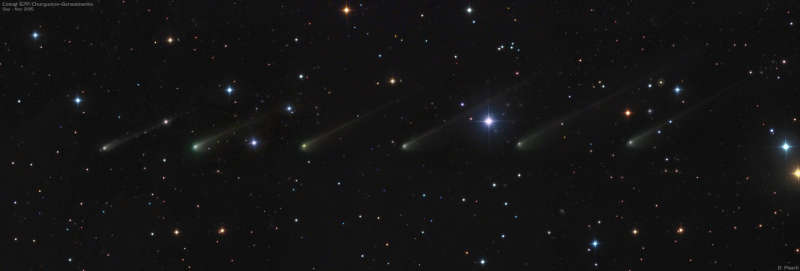
|
Credit & Copyright: Damian Peach/SEN
Explanation:
Not a bright comet,
67P/Churyumov-Gerasimenko now sweeps slowly through
planet Earth's predawn skies near the line-up of
planets along the ecliptic.
Still, this composite of telescopic images follows the
comet's progress as it moves away from the Sun
beyond
the orbit of Mars,
from late September (left) through late November (far right).
Its faint but extensive
coma and tails
are viewed against
the colorful background of stars near the eastern edge of
the constellation Leo.
A year ago, before its perihelion passage,
the comet was less active, though.
Then the Rosetta
mission's lander Philae made it's historic landing,
touching down
on the surface of the comet's nucleus.
|
January February March April May June July August September October November December |
| |||||||||||||||||||||||||||||||||||||||||||||||||||||||
NASA Web Site Statements, Warnings, and Disclaimers
NASA Official: Jay Norris. Specific rights apply.
A service of: LHEA at NASA / GSFC
& Michigan Tech. U.
Based on Astronomy Picture
Of the Day
Publications with keywords: comet
Publications with words: comet
See also:
- Comet C/2025 F2 SWAN
- APOD: 2025 February 5 Á Comet G3 ATLAS Setting over a Chilean Hill
- APOD: 2025 February 2 Á Comet G3 ATLAS Disintegrates
- APOD: 2025 January 28 Á Comet G3 ATLAS over Uruguay
- APOD: 2025 January 26 Á The Many Tails of Comet G3 ATLAS
- Comet G3 ATLAS: a Tail and a Telescope
- APOD: 2025 January 21 Á Comet ATLAS over Brasilia
